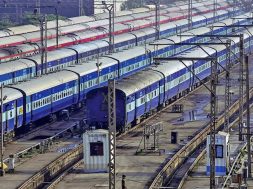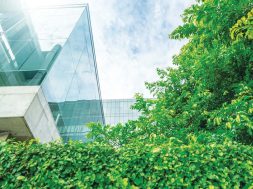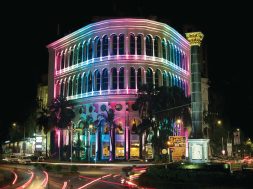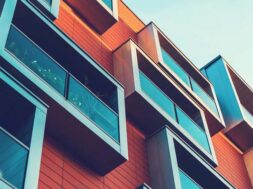Prefab steel and glass sections are widely used for the exterior of large buildings. It saves engineering time on the construction sites and now high-rise projects are also finding prefab techniques more suitable to get built in quick time
The term prefabrication is used to distinguish this process from the more conventional construction practice of transporting the basic materials to the construction site where all assembly is carried out. It is the practice of assembling components of a structure in a factory or other manufacturing site, and transporting complete assemblies or sub-assemblies to the construction site where the structure is to be located.
Prefab techniques are used in the construction of apartment blocks, and housing developments with repeated housing units. The technique is also used in office blocks, warehouses, factory buildings and recently high-rise projects.
Important features Compared with traditional reinforced concrete, high-rise steel structure has the following characteristics:• High toughness, heavy load high-rise• With good plasticity and fine moulding capacity, it has better shock absorbent and aseismatic behaviour; rather it is regarded as the best aseismatic structure• With good tenacity and better anti-fatigue strength, it can be used for all sorts of dynamic loads• Less material transportation and occupation of construction site. Low environment pollution, capable of multiple assemble and disassemble, serially reusable, over 70 per cent of recovery rate• Together with all metal, non-metal and glass curtain wall, steel structure forms all kinds of elegant building appearance• With heat insulating material, insulating efficiency of wall and roof of steel structure is better than brick and concrete. Insulating effect of steel structure is 15 times of the brick wall of the same thickness.
Repetition The handling, transportation, craneage and erection costs of prefabrication have to be weighed against in-situ alternatives. Economic justification is often dependent on high volume and repetition. This has led to use in applications such as residential blocks, hotels and high-rise buildings as well. Architectural success in disguising panel joints has improved public opinion, helping to combat the perception that prefabrication is unsightly and cheap.
Time and qualityWhere there is a short programme for construction, and so time has a higher priority than cost, prefabrication can allow parallel working on different aspects of a project. Bridges over motorways are often prefabricated to avoid causing traffic congestion. Avalanche shelters have a narrow timescale between seasons in which construction can take place so are mostly prefabricated structures.
The quality achievable with factory prefabrication is generally higher than can be achieved on site. This particularly applies to welding and hot trades such as pipe work and mechanical services. Back to back toilet and basin units mounted on steel framework are commonplace. Even mini plant rooms lend themselves to prefabrication. This can save a lot of complex site work in confined spaces.
Advantages The main advantages of prefabrication include: • Programme savings due to the ability to progress work as a parallel operation in a factory and on a construction site • Factory tolerances and workmanship is of a higher quality and consistency to that achieved on site • It tends to produce less amount of waste• Independence from adverse weather and winter working • An alternative means of production where there may be shortages of local skilled labour.
However, there are some disadvantages of prefabrication as well. Some of which include maximum load capacities of site craneage and temporary gantries, leaks can form at joints in prefabricated components
A Chinese projectBroad Sustainable Building (BSB) set an example of Chinese high-rise that got constructed in only 15 days. T30, a 17,000 sq.mtr and 30 storeyed 5-star hotel built in China got an international attention for its efficient construction methods made possible through prefab construction techniques, as 93 per cent of the high-rise was quickly pieced together with pre-made components.
It started construction on 2nd December 2011 and was completed in just 360 hours. The hotel is comprised of over 350 rooms, a restaurant, bar, gym, swimming pool on the top floor, underground parking and a helicopter pad. All rooms have quadruple-paned windows, external solar shading, LED lighting, water efficient toilets and an innovative air filtration system that promises pure air.
Cookie Consent
We use cookies to personalize your experience. By continuing to visit this website you agree to our Terms & Conditions, Privacy Policy and Cookie Policy.









